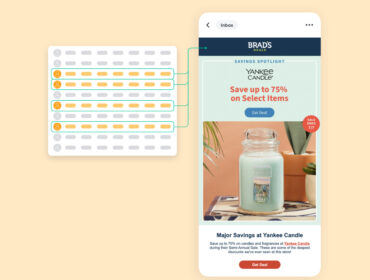3 factors that affect email list quality
Whether you’re sending the occasional marketing email or a weekly newsletter, email list quality can make or break your email marketing program. Your email list quality can have a tremendous positive impact on your business by driving engagement and revenue or it can dramatically damage your business operations and profitability.
In this blog post, we’ll explore three factors that impact email list quality, and steps marketers can take to improve it.

Good and bad data
What constitutes good or bad data is referred to as data quality. Marketers should always ask themselves if their email list (or any data) has the following attributes:
- Accuracy
- Completeness
- Consistency
- Uniqueness
- Validity
- Integrity
These data quality dimensions help you understand if your data is reliable and will help you achieve your goals. Let’s look at an example to understand why.
Mary Simpson lived in sunny and tropical Florida for five years. As an outdoors enthusiast, she frequently shopped at her favorite sporting goods store for beach apparel and supplies. However, in the last year, Mary relocated to Montana and is excited to check out local ski slopes.
Recently, Mary noticed that her favorite sporting goods store keeps sending her year-round offers for warm-weather apparel and supplies despite living in a landlocked and (mostly) cold-weather state. However, a local store offers 20% off first-time, online purchases when customers sign up for its newsletter. Mary signs up and buys new skis with her discount.
This is an example of a CRM database lacking accuracy and integrity. An incorrect zip code, like one for Mary’s previous Floridian address, can create a negative customer experience and impedes potential revenue opportunities. However, by employing an identity graph, marketers can ensure their email lists exhibit quality so they can reach their audiences with relevant and personalized messaging that drives business.
Email list engagement
Understanding your customers’ engagement with your email content is critical to ensuring email list quality. High engagement rates mean your audiences find your emails and their content valuable. Conversely, low engagement rates indicate the opposite or that many emails are invalid. And remember, email open rates are no longer a reliable metric since the launch of Apple’s MPP. Instead, look at other metrics, like clicks to open, for instance, to measure engagement.
Marketers must look at their engagement data and ask questions that will help them uncover valuable insights like, What do my most engaged subscribers have in common? What content did they engage with most? These questions can help create strategic subscriber segments and inform future email marketing strategies.
Email list hygiene
Practicing email hygiene and establishing a regular cadence for cleaning your email list is essential to ensuring your emails reach active and engaged subscribers. A clean email list improves deliverability, protects your data quality, and drives engagement.
Identity solutions, like identity graphs, can help you maintain a clean email list. That’s because identity graphs help businesses establish a single customer view. A single customer view enables you to better understand your audience by providing a cohesive overview of your audience’s behaviors. And, equipped with a clean, quality email list, you can rest assured that you’re consistently delivering relevant information and positive digital experiences to all your subscribers.


